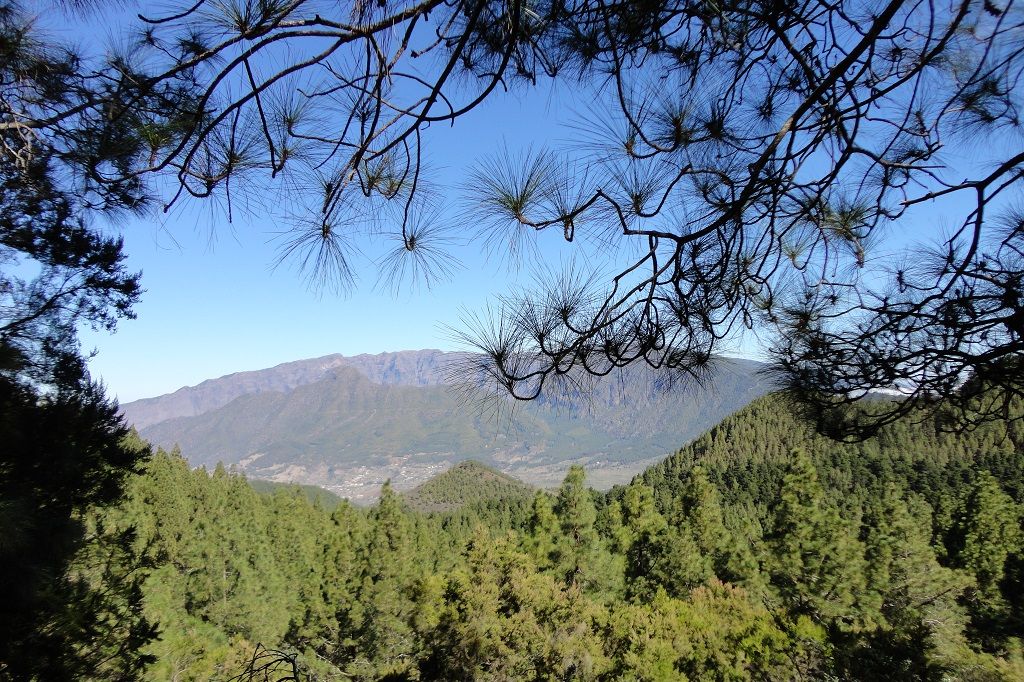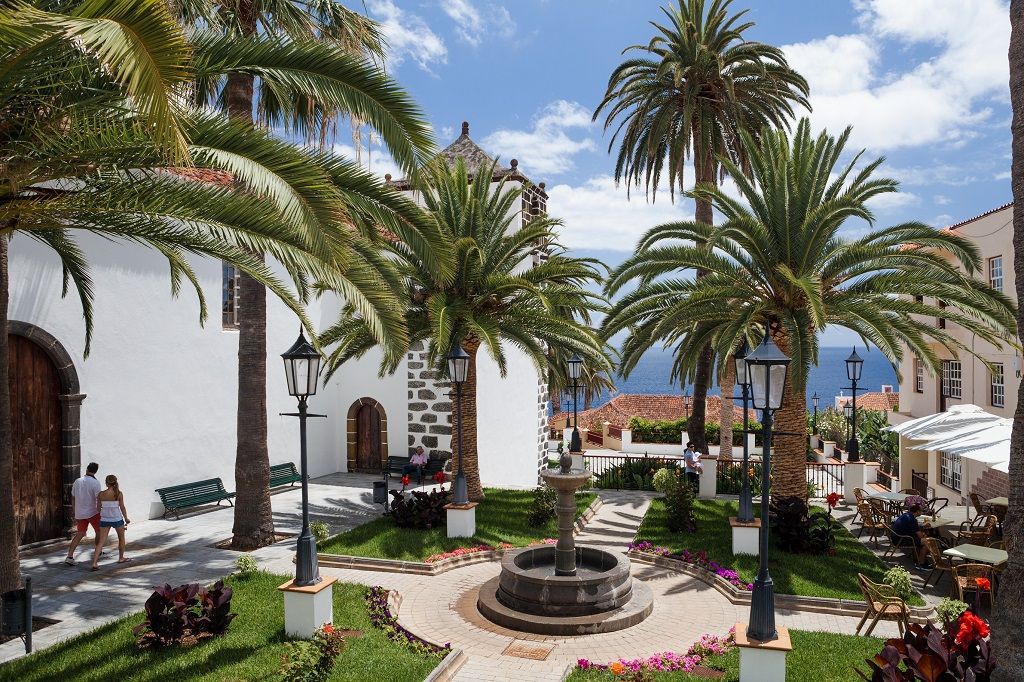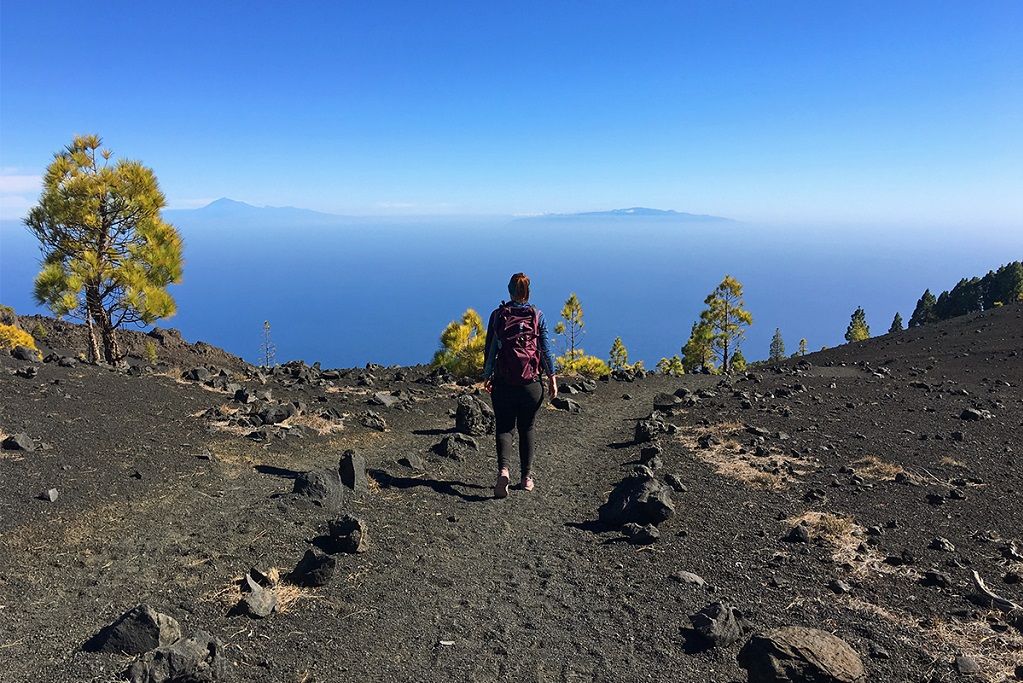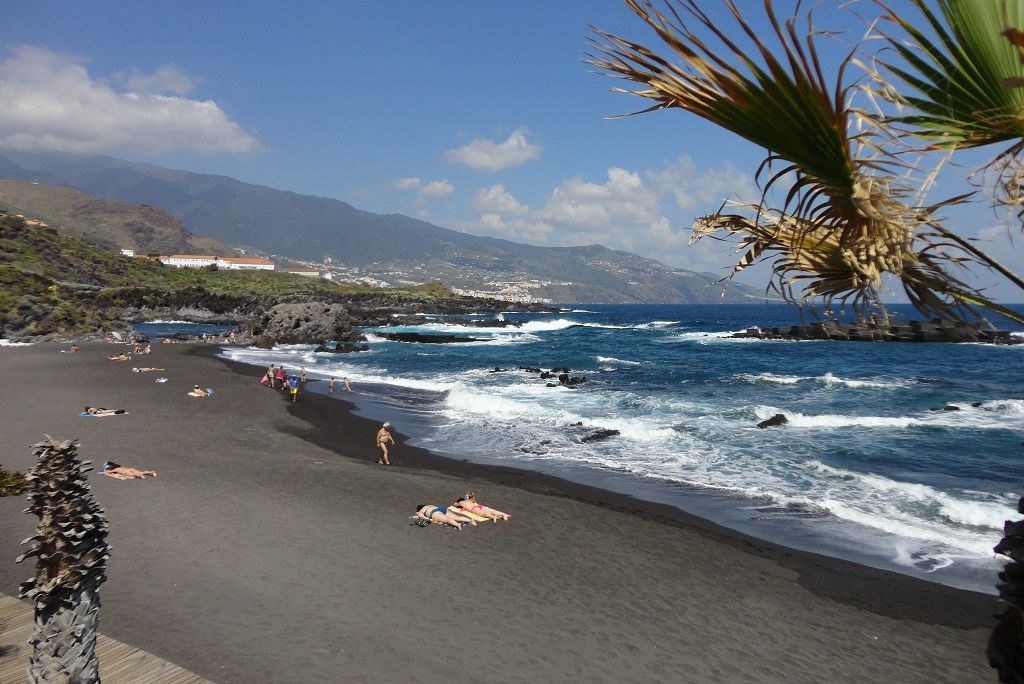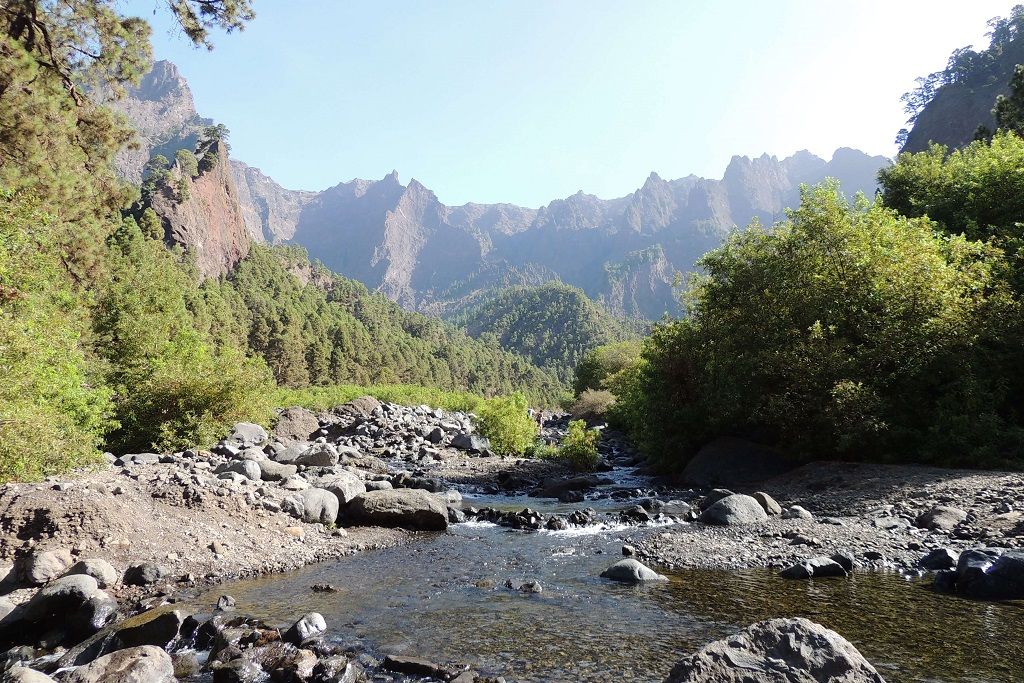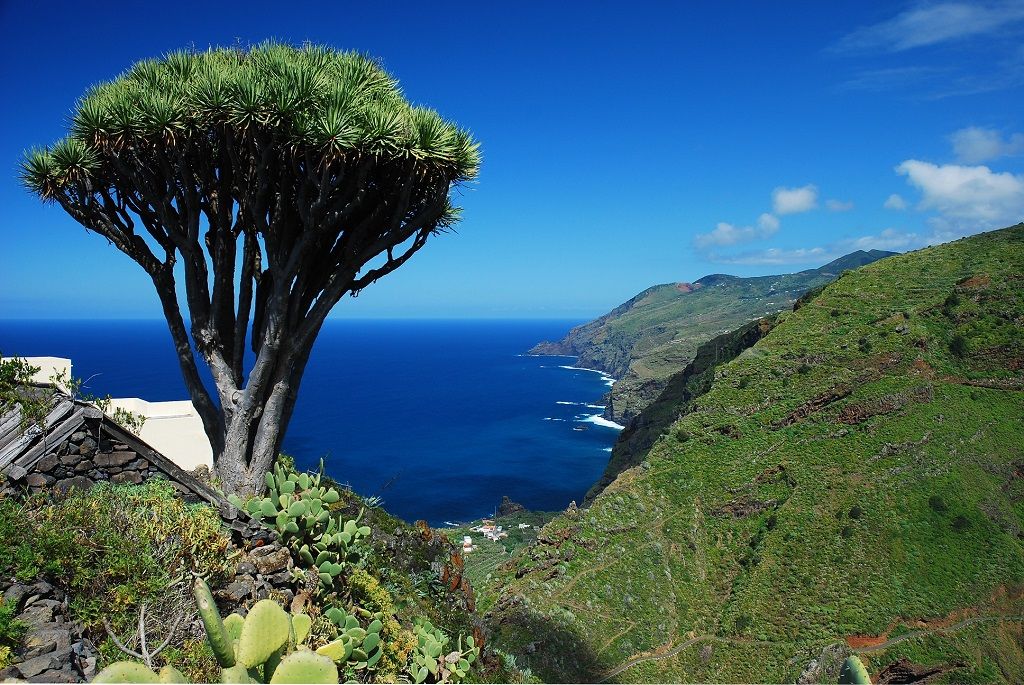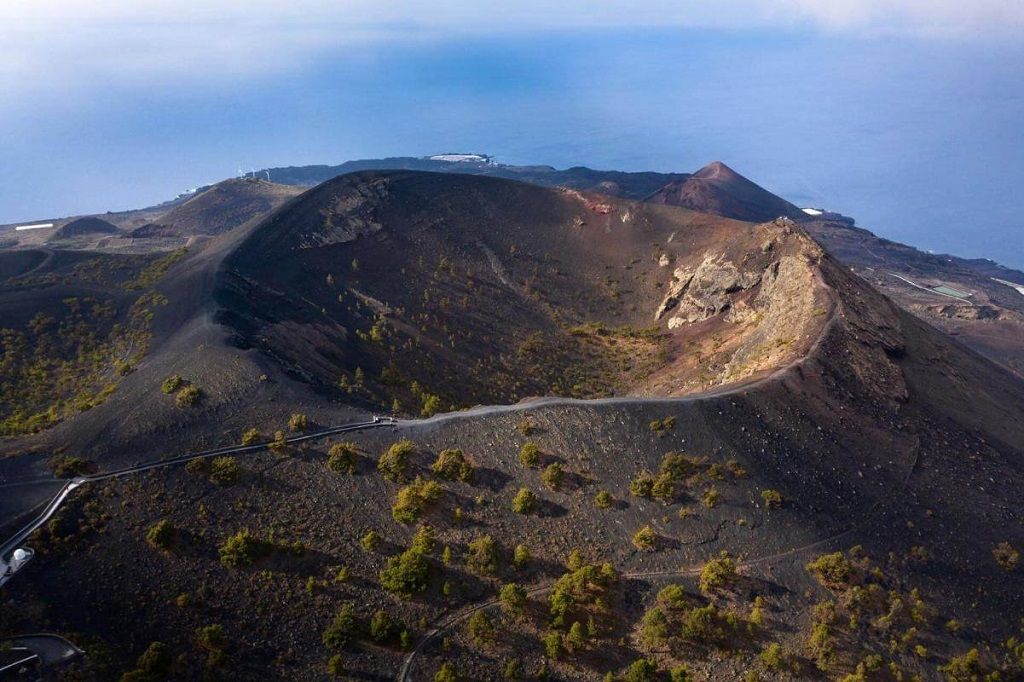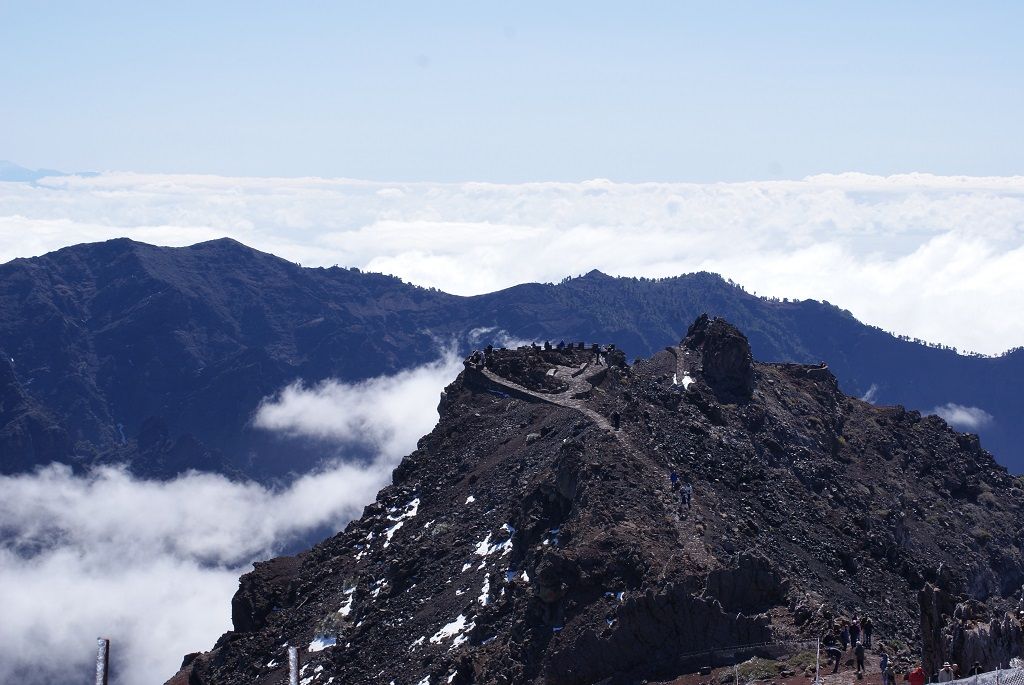La Palma
One of the smaller Canary Islands, is also called ‘the island of eternal spring’. The climate is very pleasant and mild. On the coast, the temperature rarely falls below 20° C and does not often rise above 28°. While on the top of the Roque de los Muchachos you can sometimes find snow in the winter. In the higher areas the temperature varies somewhat more, the winter evenings and nights are fresher here.
However, when there is ‘calima’, a warm desert wind from the Sahara, which brings dust into the air and high temperatures with it, then it is warmest in the higher areas of La Palma. In that case the temperature can rise to above 30°C there. This is (fortunately) only occasionally the case. The temperature of the seawater is around 24°C in summer and decreases to 19°C in February. So you can swim in the ocean all year round!
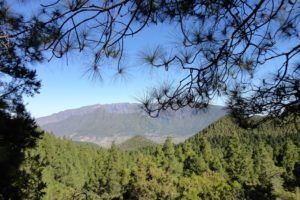
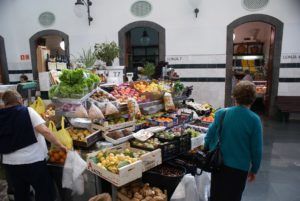

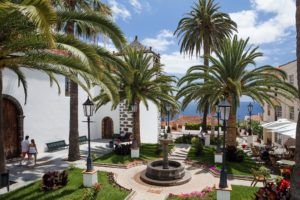
La Palma is the most north western island of
the Canary archipelago.
The island is 42 kilometres long and 24 kilometres wide. And the highest point of the island is the Roque de los Muchachos at 2450 meters altitude. Because of the large differences in height on a relatively small surface, La Palma has a large diversity in landscape. If you go from sea level to the highest peak, you will cross 5 climate zones. Each with its own characteristics and vegetation.
Beautiful nature
Wide valleys, pine and laurel forests, rugged barracks (gorges), volcanic landscapes, the beautiful erosion crater Caldera de Taburiente, waterfalls and banana plantations alternate. There is a big contrast between the rugged, green north and the dry south with its lunar landscape. As well as between the sunny west coast and the east side due to the trade winds. And of course, everywhere you look: the largest swimming pool in the world, the Atlantic Ocean.
La Palma, la Isla Bonita, the beautiful island.
Diversity
La Palma has wonderful beaches and boulevards. On the west coast, including in Tazacorte, Puerto Naos and Charco Verde. And in the east in Los Cancajos and Santa Cruz. Visit the lively towns with crowded terraces and markets. And do not forget the authentic villages where time has stood still. There are also several museums, some endearingly small.
Small scale
There is no mass tourism on La Palma, there are no high-rise buildings and there are no crowded beaches. That is precisely why we have fallen for La Palma. You will find peace and small scale, individual tourism. On La Palma, the pure and authentic island feeling prevails.
Some activities on La Palma
Hiking
With more than 1,000 km of marked trails, La Palma can rightly be called a hiking paradise.
Hikes have been set out all over the island, often on the ancient royal paths, the ‘caminos reales’. So the possibilities are endless.
Across the island run the GR130 and the GR131. The GR130 is 160 km long, goes around the whole island and connects all villages.
A folder with many hiking routes is available for our guests. It is also possible to make organized walks under the guidance of a guide.
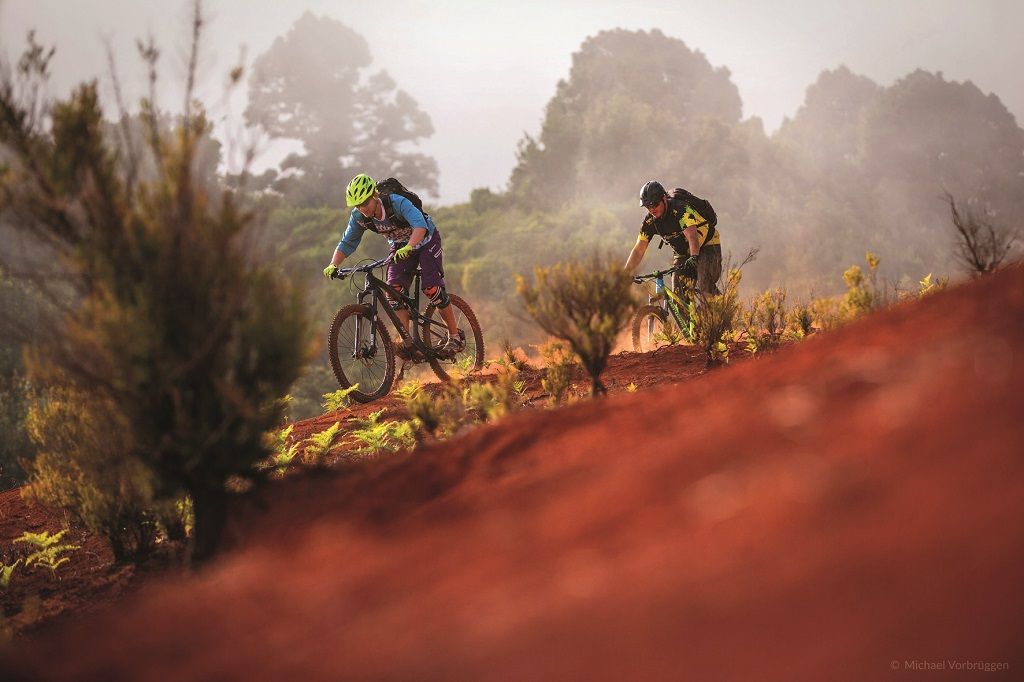
Mountain biking
La Palma is a wonderful place for mountain bikers. The island offers an amazing variety of landscapes. And beautiful mountain bike trails run through all these landscapes. One moment you cycle through green pine forests, a little later on black lava fields. Always spectacularly to do. A completely different experience than mountain biking in the flat countries like Holland and Belgium.
There are several good rental places for mountain bikes, including electric ones. In particular, the downhill routes are popular. You are dropped off at a high point so that you (almost) only have to ride downhill. Bike ‘n’ Fun and Magic Bike, are good examples of rental shops, both in Los Llanos de Aridane.
Diving, snorkelling, dolphin and whale watching
We actually live on the top of the volcano here. Because La Palma continues for another 3 km under the sea level. Here too you can discover all sorts of things. The coastline of La Palma is full of beautifully coloured fish. Which makes snorkelling or diving a fantastic experience. There is a Dutch diving school called Casa de Buceo, on La Palma, in Los Llanos de Aridane.
Also there are dolphins and whales around La Palma. From the port of Tazacorte several boat excursions can be made to spot these animals. Varying from a few hours to a full-day programme.
Beaches
La Palma does not have miles of sandy beaches like on Gran Canaria and Tenerife. But there are several beautiful black lava beaches on the island. Most famous are the beaches of Tazacorte, Puerto Naos and Charco Verde on the west side of the island. And Los Cancajos and Santa Cruz on the east side. Sunbeds and umbrellas can be rented on most beaches. Of course there are kiosks on the beach where you can have a drink. Tazacorte and Puerto Naos have a pleasant boulevard.
Explore La Palma, some tips
Caldera de Taburiente
National park Caldera de Taburiente is superb. It is one of the largest erosion craters in the world. With a diameter of more than 8 km and impressive, perpendicular walls of 2000 meters. Here, water flows underneath. The Caldera can be admired from above from the Roque de los Muchachos. But also from the mirador at the Cumbrecita. And via a walk along the riverbed from the Barranco de las Angustias.
The north
In the north of La Palma you can imagine yourself at the end of the world. The beautiful landscape is scattered with valleys and remote villages. Such as Franceses, La Tosca, Gallega, El Tablado and Roque Faro. And there are rugged cliffs. The rocky coast goes straight into the ocean here and time seems to have stood still. For hikers, the north of La Palma is a Mecca. You will also find the beautiful Dragon trees (Dragos) here as well as in the northwest of La Palma.
The northwest
In the northwest of La Palma, the valleys are overgrown with a wide variety of plants and flowers. And there are fields and vineyards scattered across the landscape. Here lies, among others, the idyllic-romantic village of Las Tricias. In the flowerpower era many hippies have settled down here and stayed, Furthermore you will find the tranquil Puntagorda and friendly Tijarafe in the northwest. There are numerous viewpoints and wonderful hiking routes. You will also find the beautiful Dragon trees (Dragos) here as well as in the north of La Palma.
The volcanic south
The south of La Palma is covered with a chain of volcanoes, the Cumbre Nueva and the Cumbre Vieja. They run like the backbone (of vertebrae) over the island. Here, you will find ancient volcanoes covered with pine forests. But also very young volcanoes, the last of which erupted in 1949 (volcano San Juan) and in 1971 (volcano Teneguia).
The north of La Palma is declared dead, volcanically spoken. But the south is one of the most active volcanic areas in the world. You can walk the impressive volcano route from Refugio El Pilar to the lighthouse of Funcaliente. Which passes through a unique volcanic landscape. Or climb a single volcano or view above and underground lava tunnels.
In the extreme south you will find in Los Canarios/Funcaliente, the visitor center on the San Antonio volcano. And on the coast; the salt fields, the ‘Salinas’ of La Palma.
The capital Santa Cruz
Santa Cruz is a photogenic, picturesque little town on the east coast of La Palma. It has a natural harbour and a large beach. Santa Cruz de La Palma was an important port city once, but that time is far behind us. However, there are still many colonial houses and squares that date from that time. Where Los Llanos today is the economic heart, Santa Cruz is the administrative and cultural heart of the island. The city is definitely worth a visit.
The Aridane valley
Centrally located on the sunny west side of La Palma lies the valley of Aridane. This area is relatively flat. It stretches from the mountains of the Cumbre Nueva up to the coastal strip from Tazacorte to El Remo. At the Cumbre Nueva, the ‘cascade of clouds’ can often be seen above El Paso.
In the valley, many villages, banana plantations, lava flows and the Caldera de Taburiente national park can be found. And of course the town of Los Llanos de Aridane, the economic heart of the west side of La Palma. Despite that it is the economic heart, Los Llanos has kept his relaxed, friendly character. It is lovely to relax on the terraces on the Plaza de España under the beautiful old laurel trees.
Roque de los Muchachos
The highest point of the island is the Roque de los Muchachos, with a height of 2450 meters. From here you have a beautiful view of the Caldera and the Aridane valley. As well as of the Cumbre Nueva and Cumbre Vieja volcanoes. And the surrounding islands of Tenerife, La Gomera and El Hierro. La Palma has a very clear and clean air. That is why there are several observatories with enormous telescopes to study the universe here.
Laurel forests Los Tilos/La Zarza
In the northeast and north of the island lies the ‘jungle’ of Europe. With moist and green laurel forests, ferns and mosses. Via various hiking trails in Los Tilos (northeast) and La Zarza (north), you can discover these beautiful forests. In La Zarza, there is also a museum.

